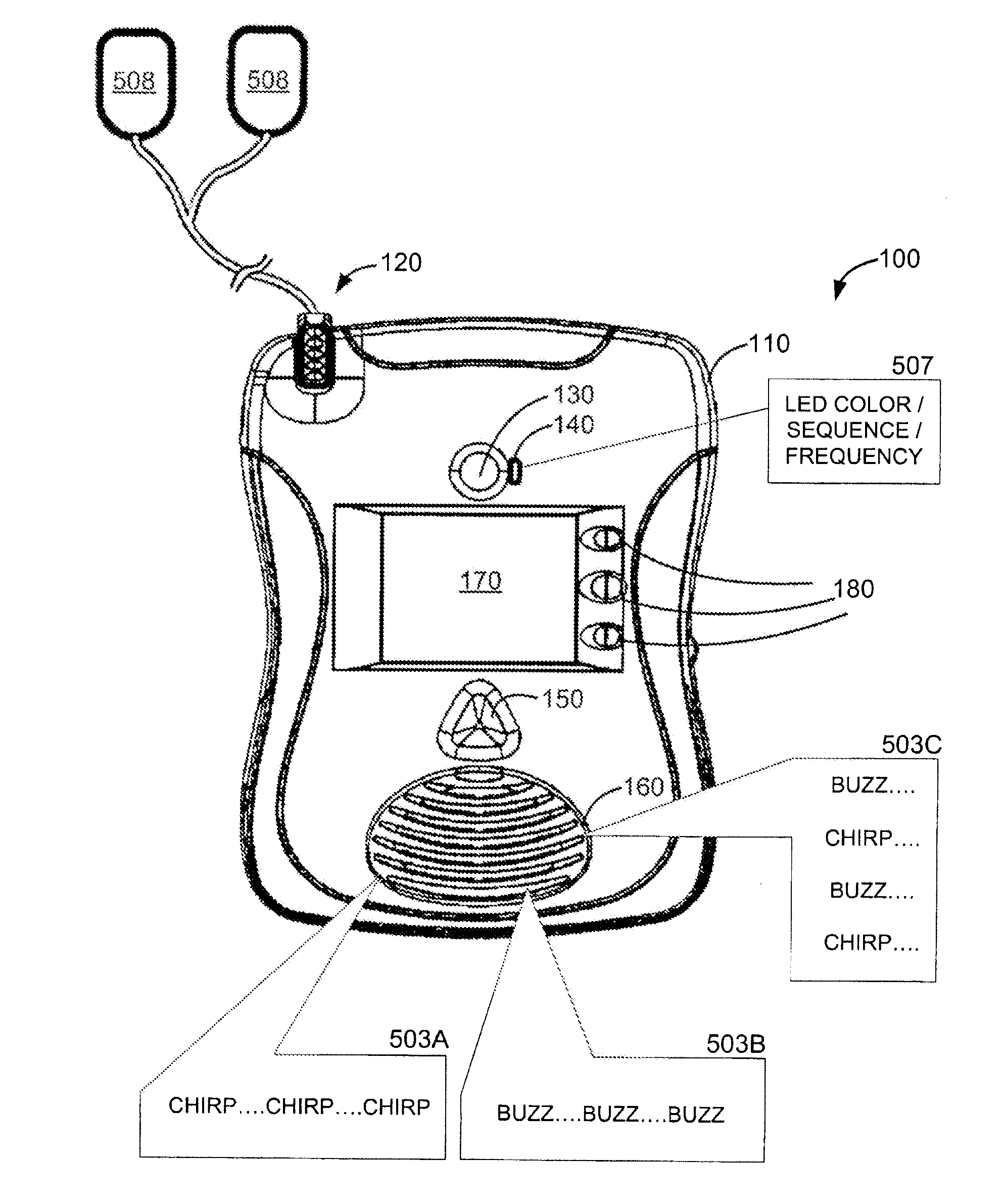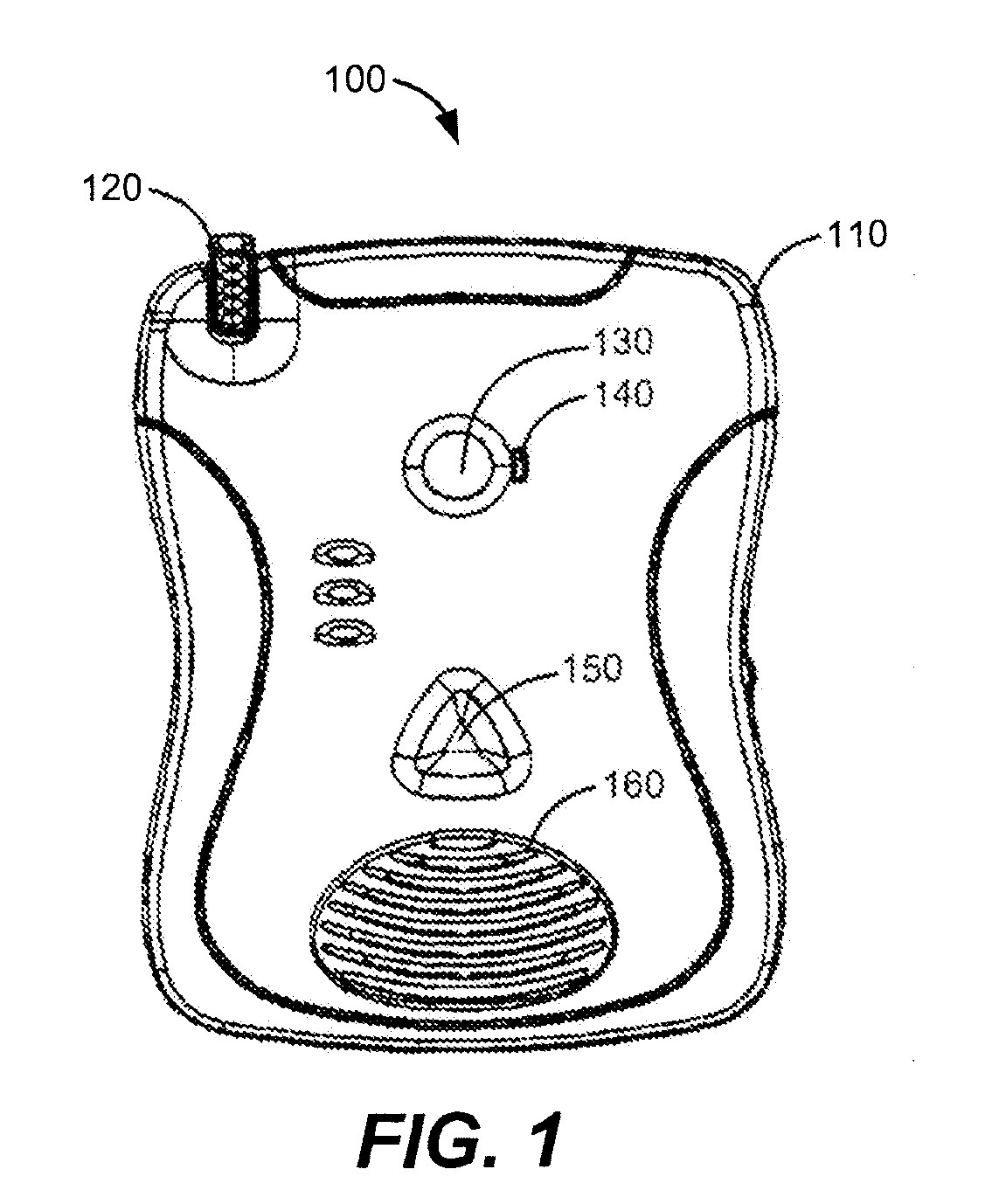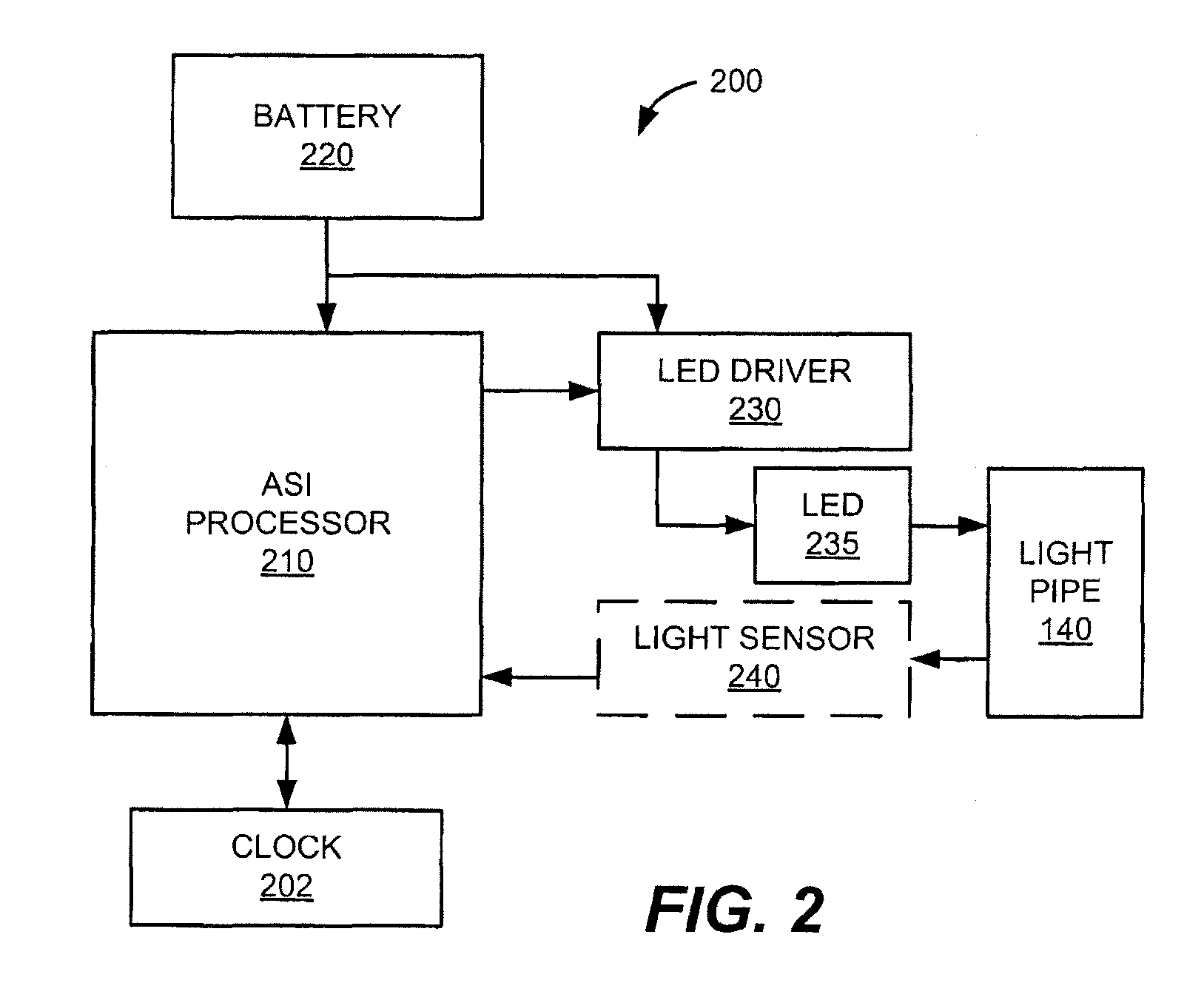System and Method for Effectively Indicating Element Failure or a Preventive Maintenance Condition in an Automatic External Defibrillator (AED)
a technology of automatic external defibrillator and status indicator, which is applied in the field of status indicators of portable aeds, can solve the problems of consuming more power than necessary, reducing the amount of power used for operation, and no way, so as to prolong the battery life of battery-operated host devices and reduce power consumption. , the effect of less power
- Summary
- Abstract
- Description
- Claims
- Application Information
AI Technical Summary
Benefits of technology
Problems solved by technology
Method used
Image
Examples
Embodiment Construction
[0059]The inventive ASI system can determine, or predetermined values may be provided for, the duration of audible or visual alerts or both and the amount of delays between the alerts based on the condition of an element of a portable AED, such as a battery. The duration of the audible alerts and amount of delay between the audible alerts may be designed to attract more human intervention relative to conventional alerts.
[0060]The inventive ASI system may also comprise an active status indicator (ASI) whose operation is automatically adjusted in response to its environment while the host device is in a non-operative state. The inventive ASI system may supply status information about a host device to a user while the host device is in a non-operative state. The inventive ASI system may adjust the intensity level, duration of powering, or duration between powering of any status indication in response to the ambient environment of the host system. Such adjustments may reduce power consu...
PUM
 Login to View More
Login to View More Abstract
Description
Claims
Application Information
 Login to View More
Login to View More - R&D
- Intellectual Property
- Life Sciences
- Materials
- Tech Scout
- Unparalleled Data Quality
- Higher Quality Content
- 60% Fewer Hallucinations
Browse by: Latest US Patents, China's latest patents, Technical Efficacy Thesaurus, Application Domain, Technology Topic, Popular Technical Reports.
© 2025 PatSnap. All rights reserved.Legal|Privacy policy|Modern Slavery Act Transparency Statement|Sitemap|About US| Contact US: help@patsnap.com



